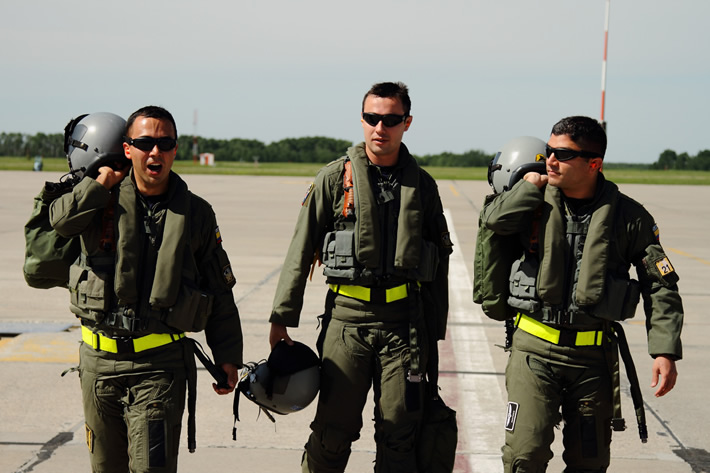Correlation between top management credibilityand camaraderie with the formation of an atmosphere of respect in the great places to work in colombia
DOI:
https://doi.org/10.18667/cienciaypoderaereo.7Keywords:
Camaraderie, credibility, GPTW, respect, top management, work environmentAbstract
This article displays some of the results found as part of the doctoral dissertation entitled "The work environment and its impact on the performance of the best places to work in Colombia", in light of the approach of the Institute Great Places to Work (GPTW), 2003-2009. The paper lists findings related to the correlation between three of the five variables used by the GPTW: credibility, camaraderie and respect. Credibility, an independent variable, is found to be related to: 1) the communication maintained by managers with their partners which contains information and expectations related to important issues and changes, and the accessibility of leaders to their subordinates, 2) leaders' competence in conducting business, completing work, awareness of objectives, and trust in subordinates, and 3) integrity, in terms of the fulfillment of promises, honesty, and the match between actions and words. The second independent variable, camaraderie, is expressed through fraternity, cordiality of the workplace and sense of team. Respect, the dependent variable, was analyzed in relation to four factors: 1) support for professional development and recognition given to employees for their work 2) participation, measured by the approval of suggestions and employees' involvement in decision-making 3) care for the physical and psychological work environment, and 4) matters related to personal life (leisure, work-life balance, interest in the employee as a person and related benefits).
Downloads
References
Cotton, P. (2004). Ponencia.Desarrollando un clima organizacional óptimo.En el II Simposio, "Hacia lugares de trabajo más seguros en Australia", (Sídney, Australia, Marzo de 2004). Traducción: Los Recursos Humanos.com. En: http://www.losrecursoshumanos.com/desarrollando-un-clima-organizacional-optimo.htm. Recuperado en junio de 2009.
Filo K.; Funk D. C. & O'Brien D. (2009). The Meaning Behind Attachment: Exploring Camaraderie, Cause and Competency at a Charity Sport Event. Journal of Sport Management, 2009, 23, pp. 361- 387 © 2009 Human Kinetics, Inc. Recuperado en enero 2012 de:http://web.ebscohost.com/ehost/pdfviewer/pdfviewer?vid=3&sid=f65646f6-227f-4e71-ba34-c47236c2c9fc%40 sessionmgr115&hid =126
https://doi.org/10.1123/jsm.23.3.361
Gómez, C. A. (2004). Diseño, construcción y validación de un instrumento que evalúa clima organizacional en empresas colombianas, desde la teoría de respuesta al Ítem. En: Acta Colombiana de psicología 11, pp. 97-113, 04. Colombia: Universidad Católica de Colombia.
GPTW (2008). Modelo. En: http://www.greatplacetowork.es/great/modelo.php. Recuperado en abril de 2010.
Ouellet, A. (2001). Procesos de investigación: Introducción a la metodología de la investigación y las competencias pedagógicas. 1ª edición en español. Bogotá. D.C.: Escuela de Administración de Negocios -EAN-. Centro de Investigaciones. earned the top spot on this year's 50 best Small and Medium Workplaces in Europe. p.55.En: http://www.greatplacetoworkeurope.com/gptw/GPTW-Magazine-EU.pdf. Recuperado en diciembre de 2009.
Suárez A. (2010). ¿Cómo hacer la transición hacia un excelente ambiente laboral? En: http://www.gestionhumana.com/gh4/BancoMedios/Documentos%20PDF/11-transicion_ambiente_ laboral.pdf . Mencionado por Pérez Uribe R. (2012)Universidad de Antioquia (2007). La gerencia y el control de procesos. En: http://docencia.udea.edu.co/bacteriologia/CalidadLaboratorios/capitulo2/capitulo2.html. Vicerrectoría de Docencia. Consultado en septiembre 22 de 2007.Usac (2009). Estadística. En: http://sitios.ingenieria-usac.edu.gt/estadistica/estadistica3/teoria.html. Recuperado en junio de 2009.

Downloads
Published
Issue
Section
License
Assignment of Copyrights
Authors assign Ciencia y Poder Aéreo journal the exclusive rights (reproduction, distribution, public communication, and transformation) to exploit and commercialize their work, in whole or in part, in all the formats and modalities of present or future exploitation, in all languages, throughout the life of the work and throughout the world.
All contents published in Ciencia y Poder Aéreo journal are licensed under a Creative Commons Attribution 4.0 International License, whose complete information is available at http://creativecommons.org/licenses/by/4.0/
Under the terms of this license, users are free to download, print, extract, archive, distribute and publicly communicate the content of articles, provided that proper credit is granted to authors and Ciencia y Poder Aéreo, scientific journal of the Graduate School of the Colombian Air Force. Except when otherwise indicated, this site and its contents are licensed under a Creative Commons Attribution 4.0 International License.
For other uses not considered under this license it is required to contact the Director or the Editor of the journal at the e-mail address cienciaypoderaereo1@gmail.com.
The Graduate School of the Colombian Air Force and this publication are not responsible for the concepts expressed in the articles, including the metadata or the affiliation stated by authors. This is the full responsibility of the authors.





















